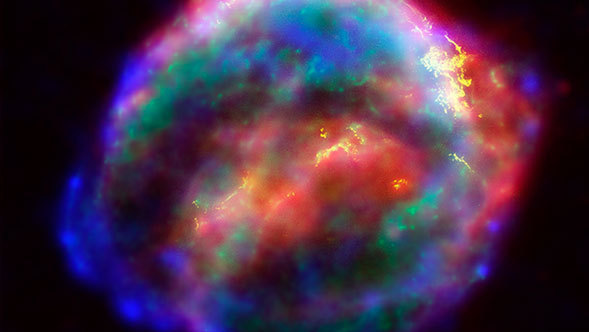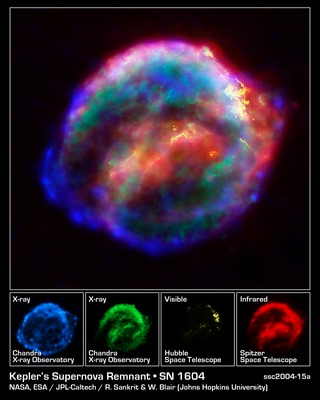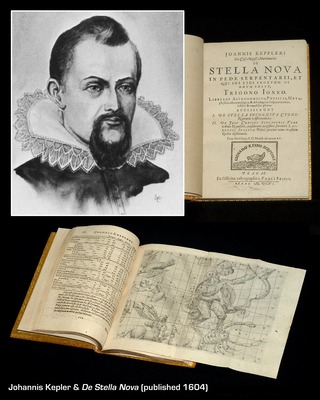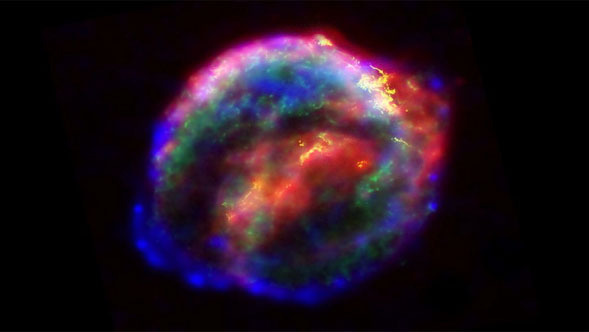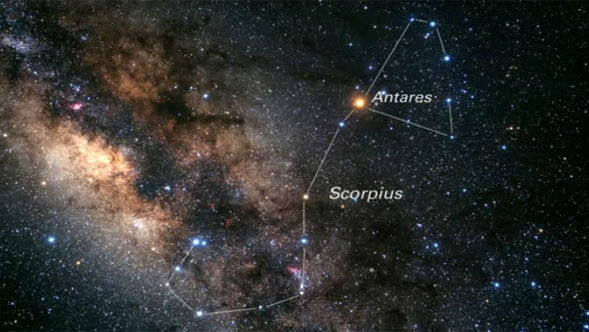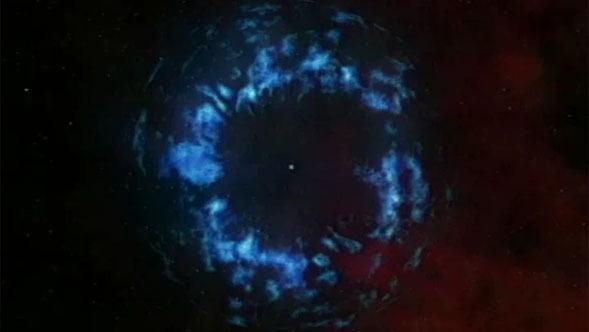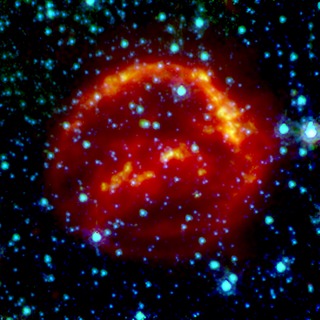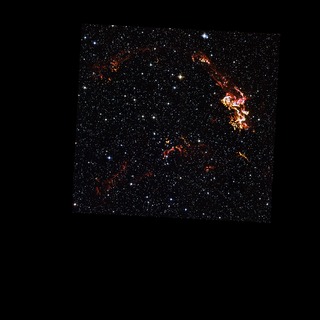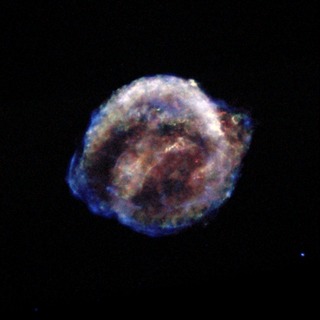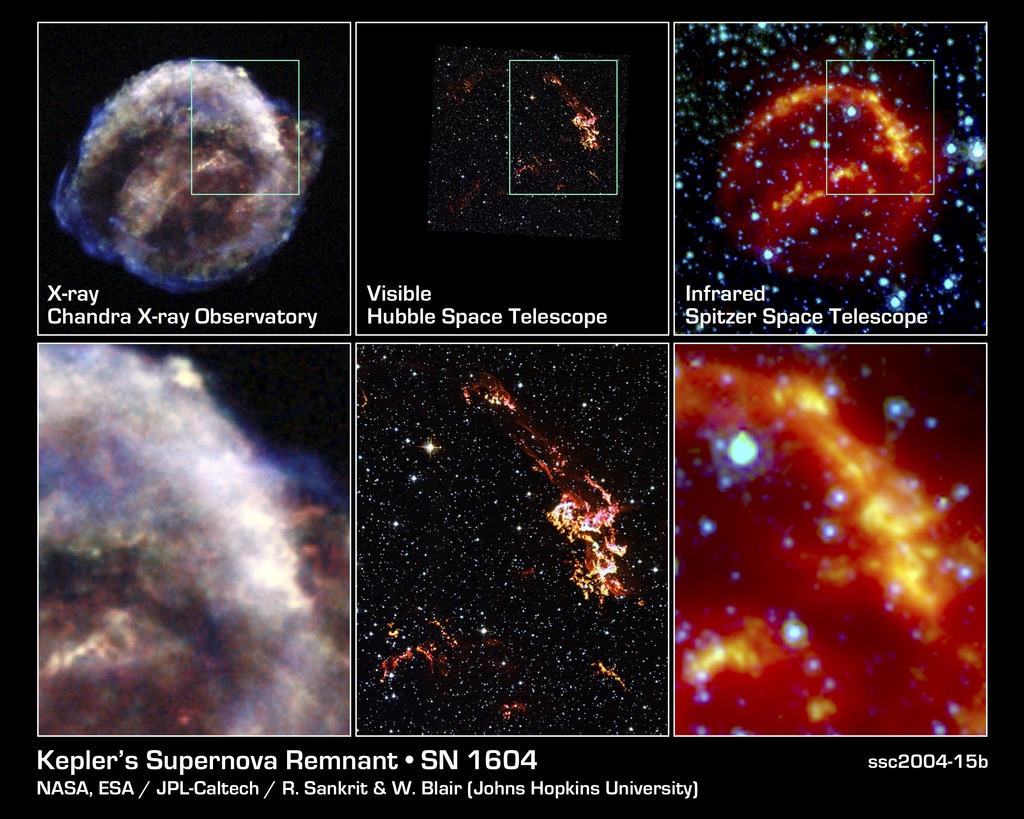
Credit: NASA/ESA/R. Sankrit and W. Blair (Johns Hopkins University)
Observation • October 6th, 2004 • ssc2004-15b
ssc2004-15b
These images represent views of Kepler's supernova remnant taken in X-rays, visible light, and infrared radiation.
Each top panel shows the entire remnant. Each color in this image represents a different region of the electromagnetic spectrum, from X-rays to infrared light. The X-ray and infrared data cannot be seen with the human eye. Astronomers have color-coded those data so they can be seen in these images.
The bottom panels are close-up views of the remnant. In the bottom, center image, Hubble sees fine details in the brightest, densest areas of gas. The region seen in these images is outlined in the top, center panel.
The images indicate that the bubble of gas that makes up the supernova remnant appears different in various types of light. Chandra reveals the hottest gas [colored blue and colored green], which radiates in X-rays. The blue color represents the higher-energy gas; the green, the lower-energy gas. Hubble shows the brightest, densest gas [colored yellow], which appears in visible light. Spitzer unveils heated dust [colored red], which radiates in infrared light.
About the Object
- Name
- Kepler's Supernova Remnant • SN 1604
- Type
- Nebula > Type > Supernova Remnant
- Star > Evolutionary Stage > Supernova
- Distance
- 13,000 Light Years
Color Mapping
| Band | Wavelength | Telescope |
| X-ray | Chandra ACIS | |
| Optical | Hubble WFPC2 | |
| Infrared | Spitzer IRAC | |
| Infrared | Spitzer MIPS |
Astrometrics
- Position ()
- RA =17h 30m 42.0s
- Dec = -20° 31' 0.0"
- Field of View
- 0.0 x 0.0 arcminutes
- Orientation
- North is up
